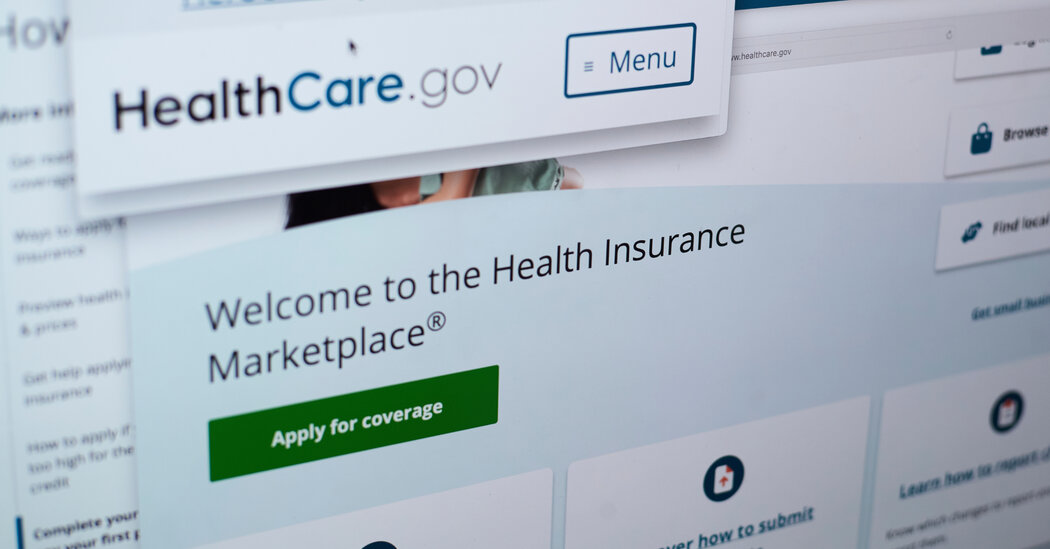As next year’s Obamacare prices start to become public, Republican lawmakers have returned to a frequent critique of the health insurance marketplaces established under the Affordable Care Act: The law made insurance just too expensive.
Premiums for individual plans are on track to rise by an average of 18 percent compared with this year. And they already averaged more than $600 a month, before accounting for subsidies that help people pay the bill. Most Americans who buy this kind of insurance could not afford these plans without financial help.
The congressional fight over whether to extend generous subsidies that help people pay these premiums highlights two broader truths about health insurance in America: It’s expensive — and every other market is also subsidized by the government.
“Health insurance in America is very expensive, because health care is very expensive,” said Katherine Baicker, a health economist who is the provost at the University of Chicago. “And that’s true in every market. What’s different is who is writing the check, and how easily perceived the full cost is to the individual who is being insured.”
Here’s how the average annual cost of Obamacare insurance compares with the other large insurance programs in the United States for a single adult, when looking at the unsubsidized, full costs for 2025:
These comparisons aren’t perfectly apples to apples. The programs cover different populations, with very different medical needs, and some allow people to go to a wider range of doctors and hospitals than others. But insurance in the individual market doesn’t stand out as pricey when compared with other programs’ costs.
It also doesn’t stand out in offering taxpayer subsidies to help people pay the cost of their coverage. In Medicaid, which serves the poor, most beneficiaries pay no premiums at all, leaving the bill to federal and state governments. In Medicare, which covers older and disabled people, hospital care is financed through a dedicated payroll tax that nearly all workers pay. And the government also covers about 75 percent of the costs of patients’ outpatient care and prescription drugs.
The funding for employer insurance is perhaps the most convoluted, because the government’s role in paying the bill is the least transparent. But those premiums are also subsidized by taxpayers. Because employer coverage is excluded from payroll and income taxes, it is effectively purchased at around a 30 percent discount on average.
And, of course, most employers pick up a huge share of the remaining tab — around 84 percent, on average, according to the latest survey from the health research group KFF, which published new numbers Wednesday. Those payments are not tax subsidies, but they do often disguise the full cost of insurance to workers.
“The real problem with comparing Obamacare plans to employer plans is it’s a little like comparing the Leninists to the Troskyites,” said Michael Cannon, the director of health care studies at the libertarian Cato Institute. Mr. Cannon believes that, if insurance were less regulated and subsidized, most Americans would choose leaner and cheaper coverage than what is currently available.
The Affordable Care Act prices tend to grab headlines because they are easy to see in online marketplaces, whereas very few Americans encounter the full prices of other types of coverage. (To construct the list above, we consulted reports from the Congressional Budget Office, the KFF employer survey and a government analysis.) But people in other insurance markets are also getting substantial government help paying for insurance.
The enhanced subsidies at the heart of the legislative fight this fall similarly insulate people in the Obamacare marketplaces from the insurance’s full costs. The poorest customers can currently obtain a plan without paying anything, and some people earning more than $100,000 can still get some financial help. On average, subsidies cover 89 percent of premiums this year, a high share that reflects the relatively low incomes of most people who are enrolled.
Democrats, who are withholding their votes on a government spending bill to get the extra subsidies extended, argue they are the only way to keep the coverage affordable for the people who need it.
If the extra Obamacare subsidies expire, people making more than $65,000 will have to pay the full cost of their insurance, meaning salaried workers at that income will get tax subsidies that aren’t available to entrepreneurs earning the same amount.
Individual insurance prices didn’t always look so similar to those for other kinds of insurance. Obamacare critics are correct that the law imposed extensive new regulations on the market, which raised prices.
But before those changes, individual insurance had huge holes that also made it very different from other kinds of insurance in what and who it covered. It often excluded benefits for common, expensive medical services, like obstetrics and prescription drugs. And insurers often just wouldn’t sell any coverage to people with pre-existing health conditions.
Obamacare changed all that. Plans had to cover a standard set of benefits and offer them to every customer, broadly adjusting only for someone’s age and location. This made the market more like the employer market, in which insurance has long covered a wide range of medical services and is offered to all workers at the same cost. The shift meant that premiums for individual insurance jumped substantially in 2014, and have continued to climb over time. But they have not overtaken the cost of employer coverage.
Some critics object to the costs associated with all the required benefits. The Affordable Care Act “prevents insurance from being insurance” by forcing even employer plans to be more generous, said Ge Bai, a Johns Hopkins accounting and health policy expert who says these changes have led to higher overall costs. The median price of an individual plan was $3,736 in 2011, adjusted for inflation, before Obamacare, nearly doubling to $6,233 in 2023.
Because the lawmakers who wrote Obamacare knew it would make individual insurance more comprehensive, and thus more expensive, subsidies were always part of the plan. Many Americans can’t afford high premiums, and if healthy people don’t buy insurance, the cost of covering the sick people who remain becomes very high. The subsidies — which have drawn in younger and healthier customers — have helped spread those costs over more people, as employer insurance does by covering a wide range of workers and benefits.
The extra subsidies that are set to expire have supercharged that effect. Actuaries for insurance companies, expecting some healthier people will drop coverage without subsidies, have estimated premiums will increase next year by an additional four percentage points.
Since the pandemic, costs have begun accelerating, across all kinds of health insurance. And Obamacare, which also had provisions to tamp down health spending, has not succeeded in stopping that recent trend. Higher hospital prices, rising labor costs and expensive new medicines are all fueling the increased health care costs. “It’s a symptom of the broader cost and price challenges facing the system,” said John A. Graves, professor of health policy and medicine at Vanderbilt University.
Reed Abelson covers the business of health care, focusing on how financial incentives are affecting the delivery of care, from the costs to consumers to the profits to providers.
Margot Sanger-Katz is a reporter covering health care policy and public health for the Upshot section of The Times.
The post Obamacare Is Expensive. But So Is All Health Insurance. appeared first on New York Times.




